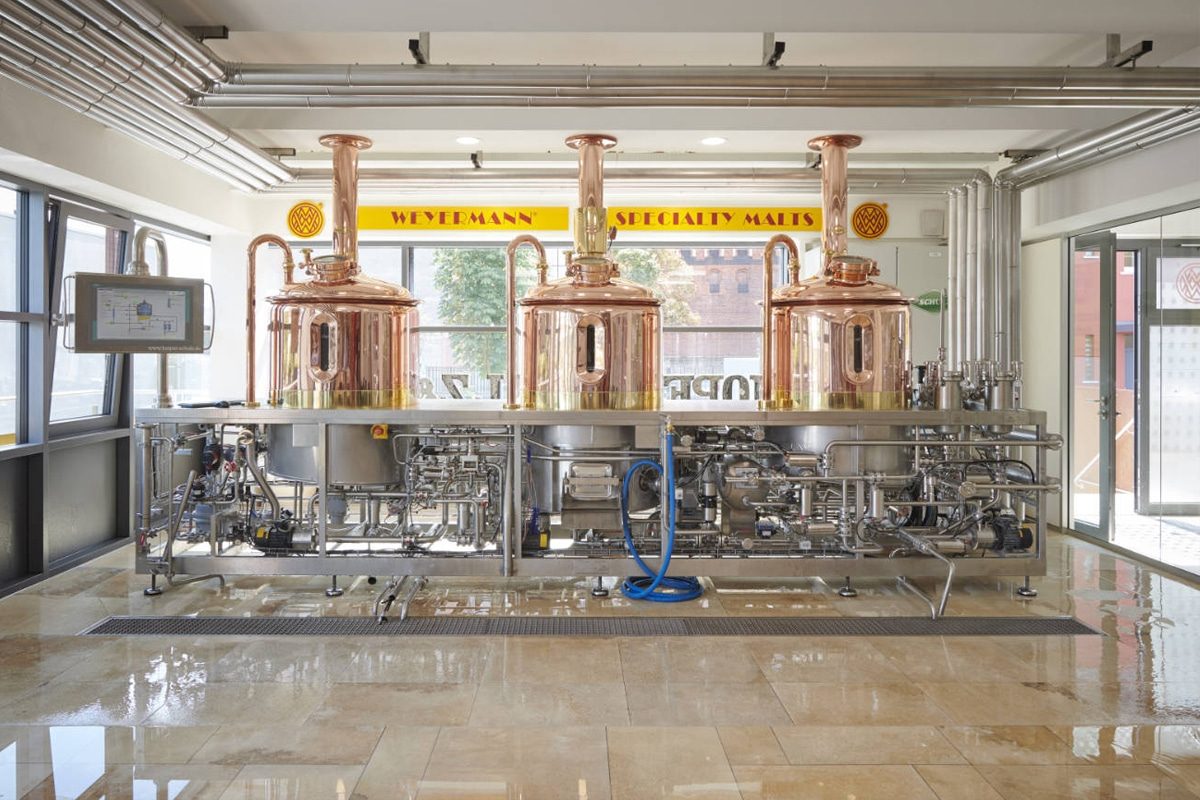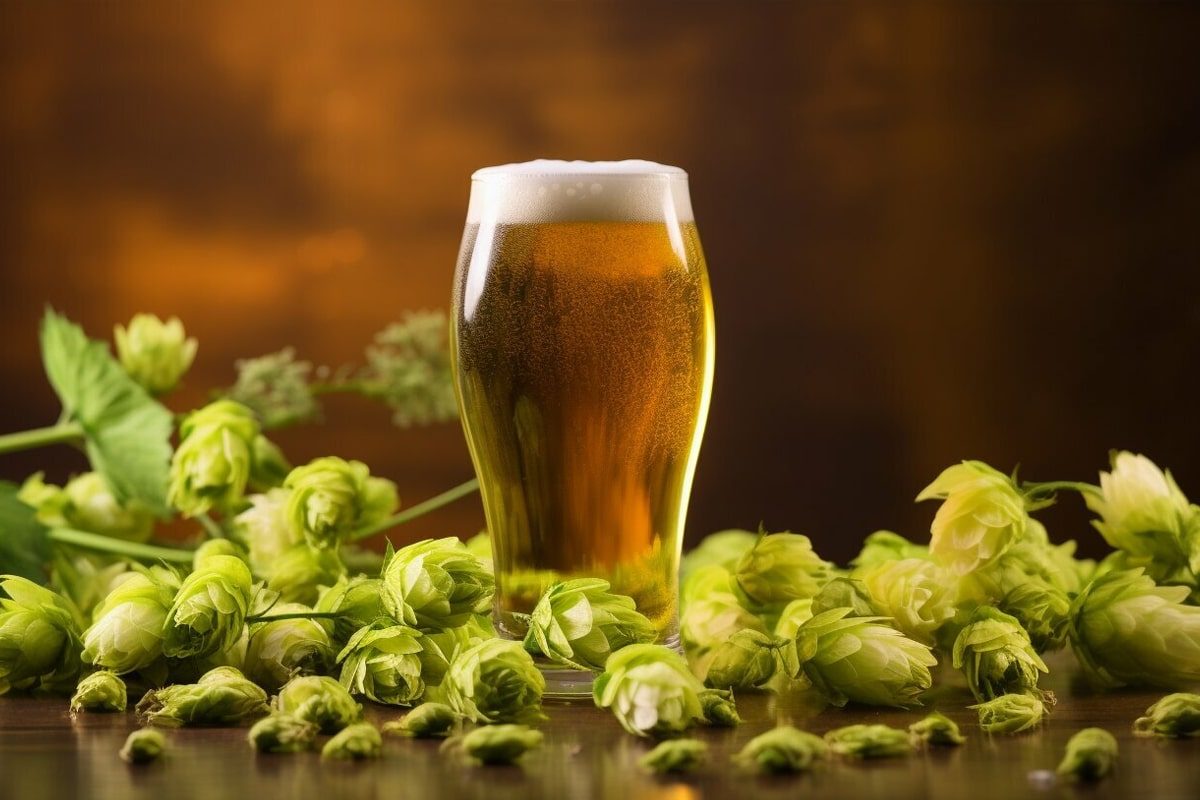
How Do Hops Affect The Flavor Of Beer?
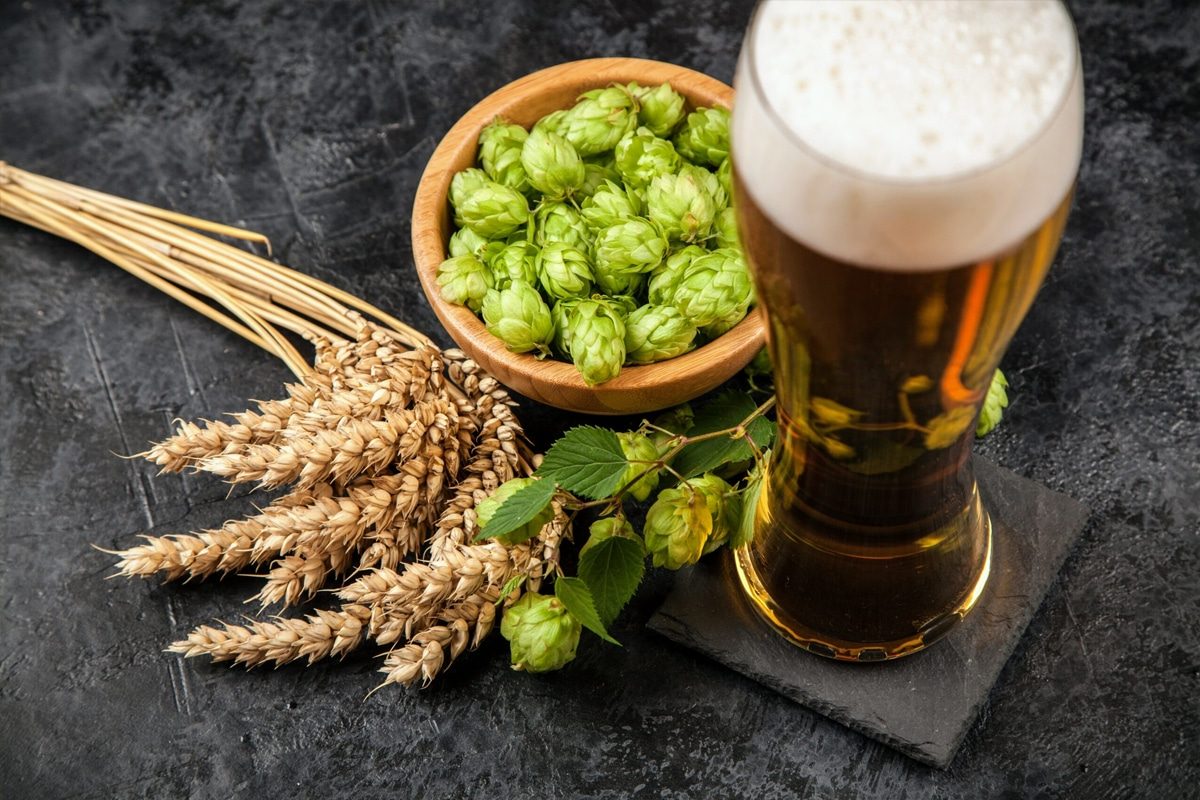
The Chemistry of Hops
Alpha Acids
Alpha acids are the primary contributors to the bitterness in beer. They are present in the resin glands of hop cones and include humulone, cohumulone, and adhumulone. During the boiling process in brewing, alpha acids undergo isomerization, transforming into iso-alpha acids. This chemical change increases their solubility in the wort, the liquid extracted from the mashing process, imparting a bitter taste that balances the sweetness of malt.
- Humulone: The most prevalent alpha acid, contributing a clean bitterness.
- Cohumulone: Known for its sharp bitterness, it is often less desired in large quantities.
- Adhumulone: Contributes a milder bitterness compared to humulone and cohumulone.
Beta Acids
Beta acids, comprising lupulone, colupulone, and adlupulone, are less influential on the immediate flavor profile of beer compared to alpha acids. They do not undergo isomerization during boiling, making them less soluble. However, beta acids oxidize over time, producing compounds that can contribute to the overall bitterness and stability of the beer as it ages.
- Lupulone: The most common beta acid, contributing to the preservation qualities of hops.
- Colupulone: Similar in structure to lupulone but less prevalent.
- Adlupulone: Present in smaller quantities and contributing to the long-term flavor stability.
Essential Oils
Essential oils in hops are volatile compounds that provide distinctive aromas and flavors, contributing significantly to the sensory experience of beer. The main essential oils found in hops include myrcene, humulene, caryophyllene, and farnesene. Each of these oils has a unique aromatic profile:
- Myrcene: Responsible for citrusy, floral, and herbal notes, myrcene is the most volatile and degrades quickly during boiling.
- Humulene: Contributes woody, earthy, and spicy aromas, providing a complex and rounded character.
- Caryophyllene: Adds spicy, peppery, and herbal flavors, enhancing the beer’s depth.
- Farnesene: Offers floral, fruity, and green apple notes, often found in noble hop varieties.
Polyphenols
Polyphenols are complex organic compounds found in hops that contribute to the mouthfeel, astringency, and stability of beer. They include tannins, which are responsible for the astringent or puckering sensation in the mouth. Polyphenols interact with proteins in the beer, influencing its clarity and stability.
- Tannins: Contribute to astringency and help with the protein-polyphenol haze formation, which can affect the clarity of the beer.
- Flavonoids: Antioxidant properties that help in preserving the beer’s flavor and preventing oxidation.
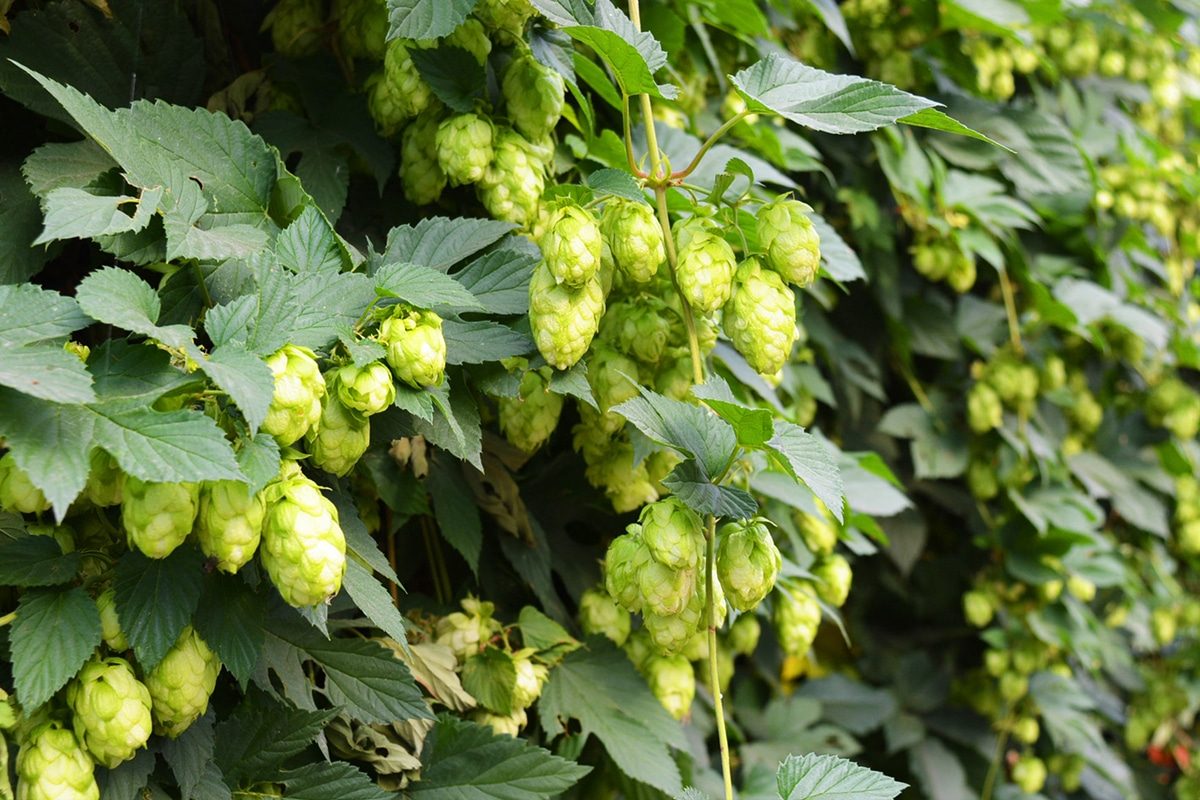
Varieties of Hops
Bittering Hops
Bittering hops, also known as high-alpha hops, are primarily used to impart bitterness to the beer. They have high levels of alpha acids, which are responsible for the bitter taste. These hops are added early in the boiling process to maximize the isomerization of alpha acids into iso-alpha acids, which dissolve in the wort and provide the necessary bitterness to balance the sweetness of the malt.
- Magnum: Known for its clean bitterness and high alpha acid content, Magnum is a versatile hop used in a variety of beer styles.
- Columbus: Often used for its strong, clean bitterness, Columbus also adds a slightly earthy and spicy character.
- Northern Brewer: Provides a balanced bitterness with subtle minty and evergreen notes, making it suitable for many traditional beer styles.
Aroma Hops
Aroma hops are prized for their aromatic properties rather than their bittering potential. These hops have lower alpha acid levels and higher concentrations of essential oils, which contribute to the beer’s aroma and flavor. Aroma hops are typically added later in the brewing process, such as during the late boil, whirlpool, or dry hopping stages, to preserve their volatile oils.
- Cascade: One of the most popular aroma hops, Cascade imparts floral, citrus, and grapefruit notes. It’s a staple in many American-style ales.
- Saaz: A traditional noble hop used in lagers and pilsners, Saaz provides a delicate floral and herbal aroma with a mild bitterness.
- Hallertau: Another noble hop, Hallertau offers mild, earthy, and slightly spicy aromas, commonly used in traditional German lagers.
Dual-Purpose Hops
Dual-purpose hops are versatile varieties that can be used for both bittering and aroma. They offer a balanced profile of alpha acids and essential oils, making them suitable for various stages of the brewing process. These hops provide brewers with the flexibility to achieve both desired bitterness and complex aromatic profiles from a single hop variety.
- Centennial: Known as a “super Cascade,” Centennial offers both strong bitterness and a floral, citrusy aroma, making it a popular choice for American ales.
- Simcoe: Valued for its versatility, Simcoe provides a balanced bitterness and a unique combination of earthy, pine, and fruity aromas.
- Amarillo: With moderate alpha acid levels and rich essential oils, Amarillo imparts a complex mix of floral, citrus, and tropical fruit notes.
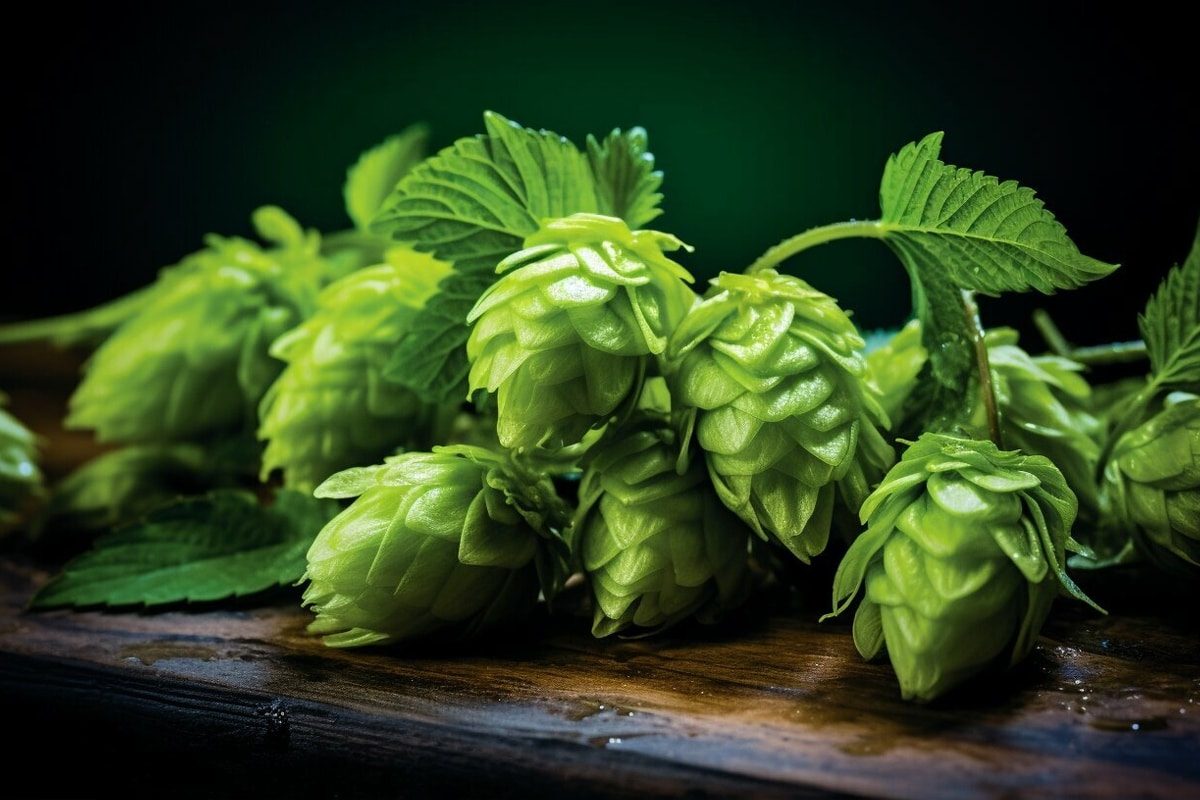
Hop Flavors and Aromas
Citrus
Citrus is one of the most common and sought-after hop aromas, especially in modern craft brewing. Hops that impart citrus flavors and aromas are typically rich in essential oils like myrcene, limonene, and citral. These oils produce notes reminiscent of lemon, orange, grapefruit, and other citrus fruits, adding a bright and refreshing quality to the beer.
- Examples: Citra, Cascade, Amarillo
- Beer Styles: IPAs, American Pale Ales, Wheat Beers
Piney/Resinous
Piney and resinous hops are known for their earthy and forest-like aromas, reminiscent of pine trees and resin. These flavors and aromas are primarily due to the presence of essential oils such as pinene and myrcene. Piney hops add a grounding and sometimes sharp characteristic to the beer, balancing sweeter malt profiles with their resinous bitterness.
- Examples: Simcoe, Chinook, Columbus
- Beer Styles: IPAs, Double IPAs, American Strong Ales
Floral
Floral hops provide delicate and perfumed aromas that can range from fresh flowers to fragrant blossoms. These hops contain essential oils like geraniol and linalool, which contribute to their floral character. Floral hops are appreciated for their subtle and nuanced aroma, adding elegance and sophistication to the beer.
- Examples: Hallertau, Saaz, East Kent Goldings
- Beer Styles: Pilsners, Lagers, Belgian Ales
Herbal
Herbal hops offer flavors and aromas reminiscent of fresh herbs, such as mint, basil, and thyme. These hops typically contain essential oils like humulene and caryophyllene, which impart earthy and green notes. Herbal hops add a fresh and sometimes slightly bitter quality to the beer, reminiscent of a herb garden.
- Examples: Fuggle, Tettnang, Styrian Goldings
- Beer Styles: English Bitters, Pilsners, Saisons
Spicy
Spicy hops contribute peppery, clove-like, or even cinnamon-like aromas and flavors to beer. These characteristics are due to the presence of essential oils such as caryophyllene and farnesene. Spicy hops add a distinct and sometimes sharp quality to the beer, enhancing its complexity and depth.
- Examples: Saaz, Perle, Spalt
- Beer Styles: Belgian Ales, German Lagers, Saisons
Fruity
Fruity hops offer a broad range of fruit-like aromas and flavors, from tropical fruits like mango and pineapple to stone fruits like peach and apricot. These hops contain high levels of essential oils such as myrcene and geraniol, which provide their fruity character. Fruity hops are highly prized for their ability to create vibrant and juicy flavor profiles.
- Examples: Mosaic, Galaxy, Azacca
- Beer Styles: New England IPAs, Pale Ales, Fruit Beers
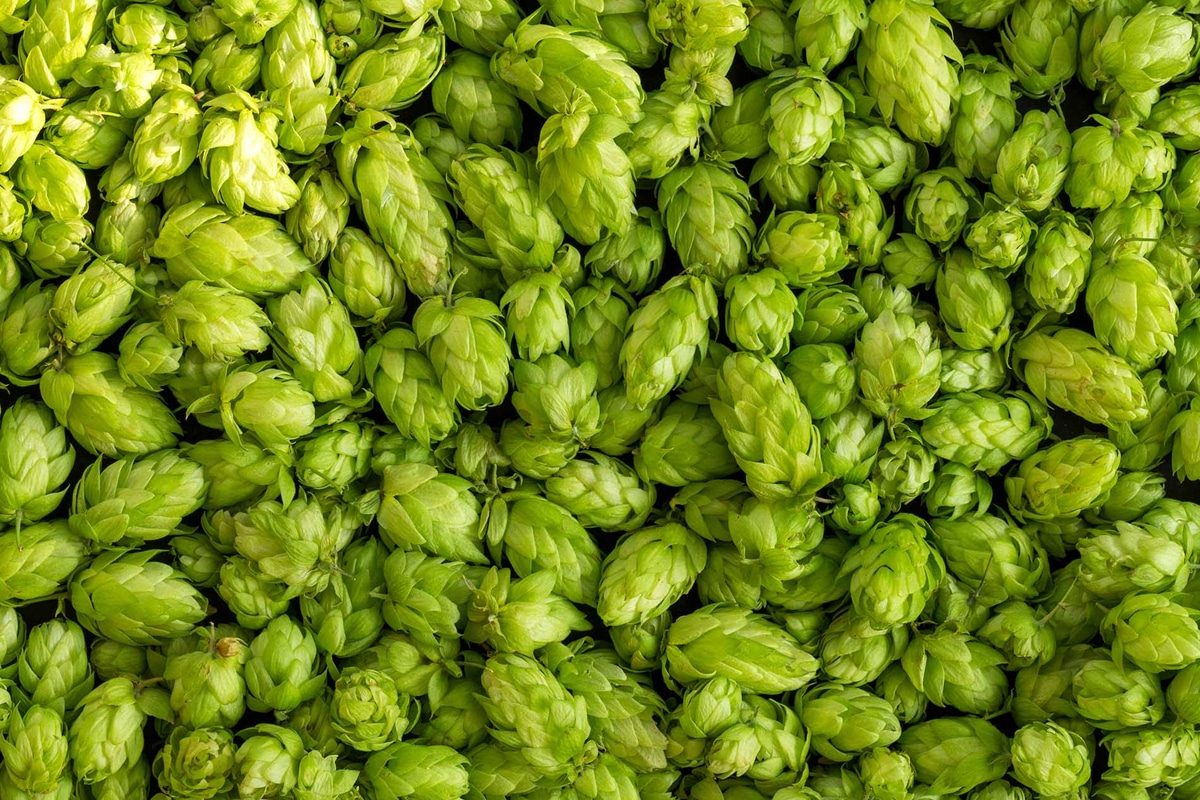
Brewing Techniques and Hop Usage
Bittering Addition
Bittering hops are added at the beginning of the boiling process, typically with a boil time of 60 minutes or more. This extended boil time allows for maximum isomerization of alpha acids into iso-alpha acids, which dissolve in the wort and provide the essential bitterness needed to balance the sweetness of the malt.
- Purpose: To impart bitterness, which balances the malt’s sweetness and provides a backbone to the beer’s flavor.
- Hops Used: High alpha acid hops, such as Magnum, Columbus, and Northern Brewer.
- Effect on Flavor: The long boiling time diminishes the delicate aromas and flavors of the hops, leaving primarily the bitter compounds. This addition does not significantly impact the beer’s aroma but provides the necessary bitterness.
Flavor Addition
Flavor hops are added later in the boil, typically around 15 to 30 minutes before the end of the boiling process. This timing allows for some of the essential oils to remain in the wort, contributing to the beer’s flavor without overpowering bitterness.
- Purpose: To add hop flavors to the beer, creating a more complex and layered taste profile.
- Hops Used: Varieties with good flavor characteristics, such as Cascade, Centennial, and Simcoe.
- Effect on Flavor: This addition imparts a balance of bitterness and hop flavor, with some essential oils surviving the boil to contribute notes of citrus, pine, floral, or herbal characteristics depending on the hop variety.
Aroma Addition
Aroma hops are added at the end of the boil or during the whirlpool stage, typically with a boil time of 5 to 15 minutes. The shorter exposure to heat helps preserve the volatile essential oils, which are responsible for the hop’s aromatic properties.
- Purpose: To enhance the beer’s aroma without adding significant bitterness.
- Hops Used: Varieties known for their aromatic qualities, such as Amarillo, Saaz, and Hallertau.
- Effect on Flavor: This technique maximizes the retention of essential oils, leading to a pronounced hop aroma that can include notes of flowers, fruit, spices, or herbs. The late addition minimizes bitterness, focusing on aroma.
Dry Hopping
Dry hopping involves adding hops during or after fermentation, without subjecting them to boiling. This method maximizes the extraction of essential oils, providing a strong hop aroma without contributing to the beer’s bitterness.
- Purpose: To impart intense hop aroma and fresh hop flavors.
- Hops Used: Aromatic varieties, such as Citra, Mosaic, and Galaxy.
- Effect on Flavor: Dry hopping significantly enhances the beer’s aroma, offering a burst of fresh hop character that can include tropical fruits, citrus, pine, or floral notes. Since the hops are not boiled, there is minimal addition of bitterness, making this technique ideal for aromatic emphasis.
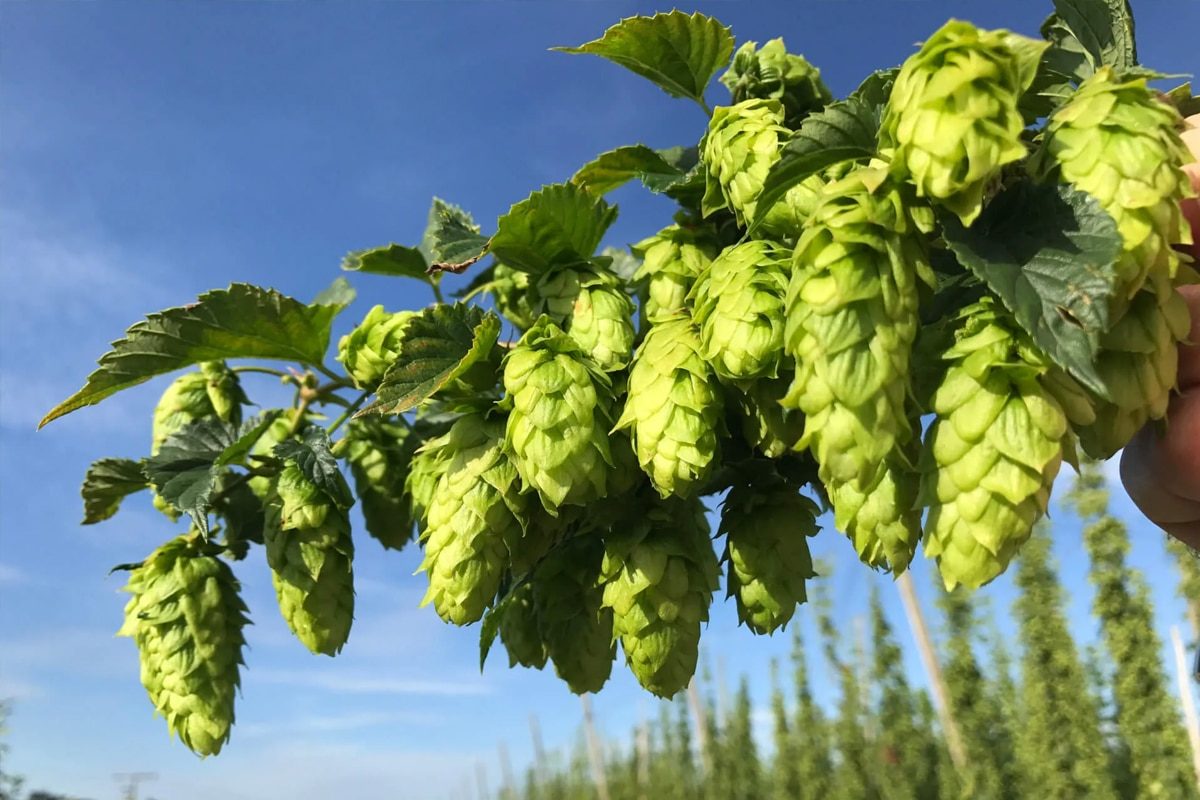
Techniques for Maximizing Hop Flavor
Hopback
A hopback is a vessel filled with fresh hops through which hot wort is passed before it goes into the fermentation tank. This technique allows for maximum extraction of hop oils while minimizing the loss of volatile aromatic compounds.
- Purpose: To intensify hop aroma and flavor by infusing the wort with fresh hop oils.
- Process: After boiling, the hot wort is passed through a hopback filled with whole cone hops or hop pellets. The hot wort extracts essential oils from the hops, which are then carried into the fermentation tank.
- Effect on Flavor: The hopback process captures a broad spectrum of hop aromas and flavors, adding depth and complexity to the beer. It enhances the fresh, green hop character without contributing additional bitterness.
Whirlpool Hopping
Whirlpool hopping involves adding hops to the wort during the whirlpool stage, which occurs after the boil and before cooling. This technique is designed to maximize the retention of hop oils while minimizing the extraction of bitterness.
- Purpose: To enhance hop aroma and flavor without adding significant bitterness.
- Process: After the boil, the wort is circulated in a whirlpool, creating a vortex. Hops are added during this stage, and the wort is left to settle for 20-40 minutes. The lower temperature of the whirlpool (compared to the boil) helps preserve the volatile essential oils.
- Effect on Flavor: Whirlpool hopping provides a robust hop aroma and flavor with minimal bitterness. It allows for the extraction of delicate floral, fruity, and herbal notes, contributing to a well-rounded hop character.
Cryo Hops
Cryo hops are a concentrated form of hops created by separating the lupulin (the resin and aromatic compounds) from the hop plant matter at extremely low temperatures. This results in a product with intense hop flavor and aroma while reducing the amount of vegetal matter.
- Purpose: To intensify hop flavor and aroma while reducing the amount of plant material needed.
- Process: Cryo hops are added at various stages of brewing, similar to traditional hops, but in smaller quantities due to their concentrated nature.
- Effect on Flavor: Cryo hops provide a powerful burst of hop aroma and flavor, including intense citrus, pine, and fruity notes. The reduced vegetal matter also means less astringency and a cleaner hop profile.
Double Dry Hopping
Double dry hopping involves adding hops to the beer at two different points during or after fermentation. This technique aims to maximize hop aroma and flavor by layering hop additions.
- Purpose: To create a more complex and intense hop aroma and flavor profile.
- Process: The first dry hop addition typically occurs towards the end of primary fermentation, while the second addition happens after primary fermentation is complete. This staggered approach allows for different hop compounds to be extracted and retained at each stage.
- Effect on Flavor: Double dry hopping results in a beer with a rich, multi-dimensional hop character. The initial dry hop addition infuses the beer with fresh hop oils, while the second addition reinforces and enhances the hop aroma and flavor, creating a layered and dynamic profile.
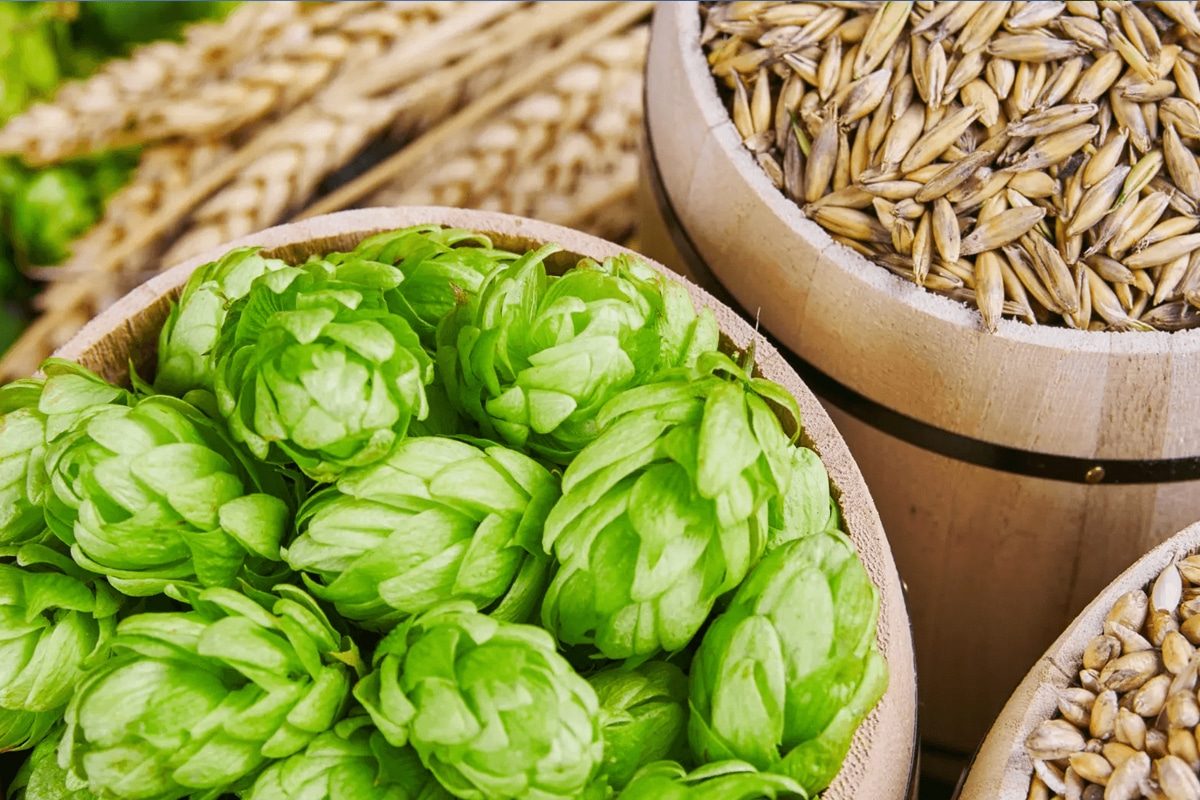
The Role of Hops in Different Beer Styles
Pale Ales and IPAs
Pale Ales and India Pale Ales (IPAs) are among the most hop-forward beer styles, showcasing the diverse flavors and aromas that hops can impart. These styles are characterized by their pronounced hop bitterness, vibrant aromatics, and complex flavor profiles.
- Hop Characteristics: Citrus, pine, floral, herbal, spicy, and fruity notes.
- Popular Hop Varieties: Cascade, Centennial, Citra, Simcoe, Amarillo, Mosaic.
- Brewing Techniques: Bittering additions early in the boil provide the necessary bitterness, while late additions and dry hopping enhance the aromatic qualities. Techniques like whirlpool hopping and double dry hopping are commonly used to intensify hop flavors and aromas.
Lagers and Pilsners
Lagers and Pilsners typically showcase a more subtle hop character compared to Pale Ales and IPAs, emphasizing balance and drinkability. The hop presence in these styles adds crispness and a refined bitterness that complements the clean malt profile.
- Hop Characteristics: Floral, herbal, spicy, and earthy notes.
- Popular Hop Varieties: Saaz, Hallertau, Tettnang, Perle.
- Brewing Techniques: Hops are often added early in the boil for bitterness, with smaller late additions for aroma. The focus is on achieving a harmonious balance between malt and hops.
Belgian Ales
Belgian Ales are known for their complex flavor profiles, which result from a combination of unique yeast strains and selective hop usage. Hops play a supportive role, enhancing the overall complexity without overshadowing the yeast-derived flavors.
- Hop Characteristics: Herbal, spicy, floral, and earthy notes.
- Popular Hop Varieties: Styrian Goldings, East Kent Goldings, Saaz, Tettnang.
- Brewing Techniques: Moderate hop additions during the boil provide balance and complexity. Aromatic hops may be used sparingly to complement the yeast character.
Stouts and Porters
Stouts and Porters focus more on the malt profile, with hops playing a secondary role. Hop bitterness can help balance the rich roasted malt flavor, but the hop aroma is usually weak.
- Hop Characteristics: Earthy, herbal, and sometimes floral notes.
- Popular Hop Varieties: Fuggle, East Kent Goldings, Northern Brewer, Challenger.
- Brewing Techniques: Hops are primarily added early in the boil for bitterness. Any late additions are minimal, focusing on enhancing the malt-driven profile.
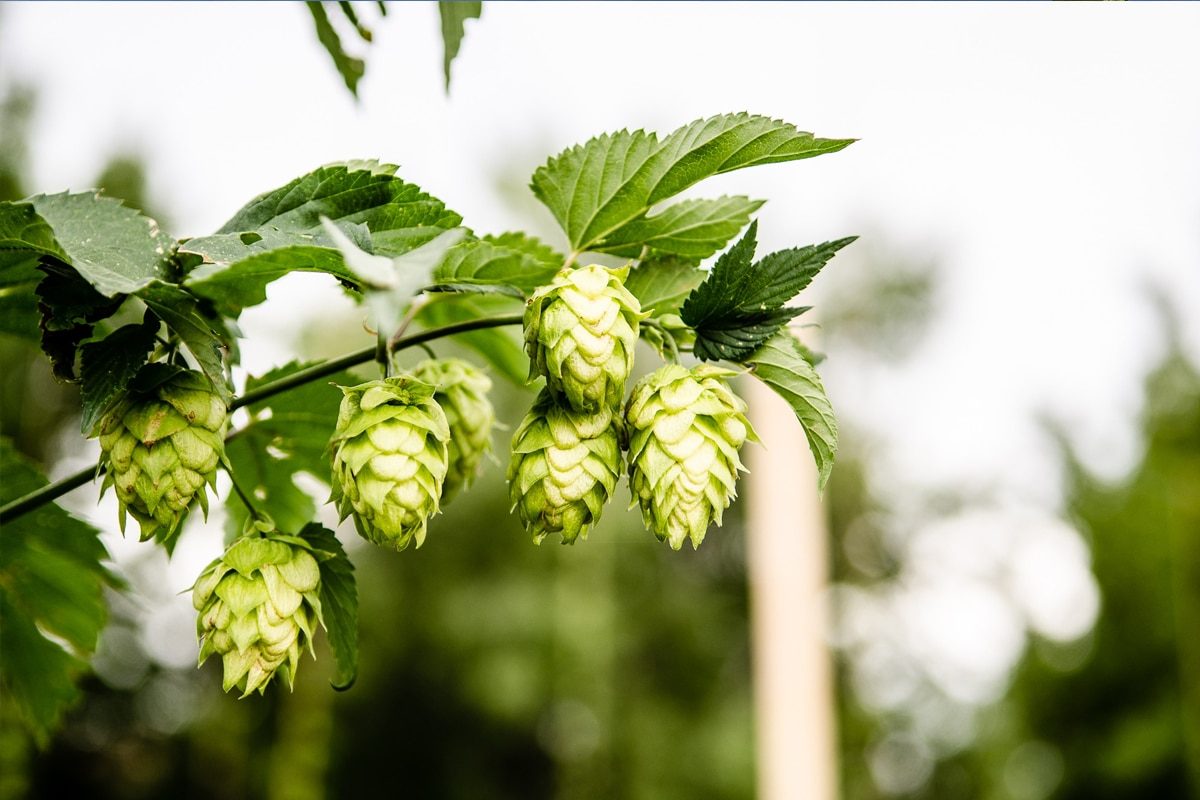
Summary
